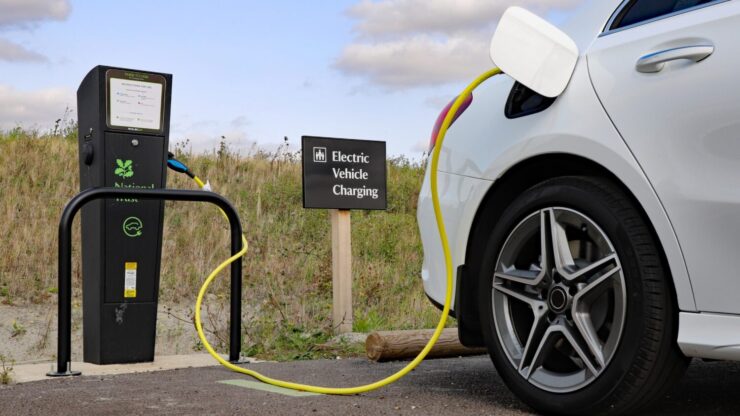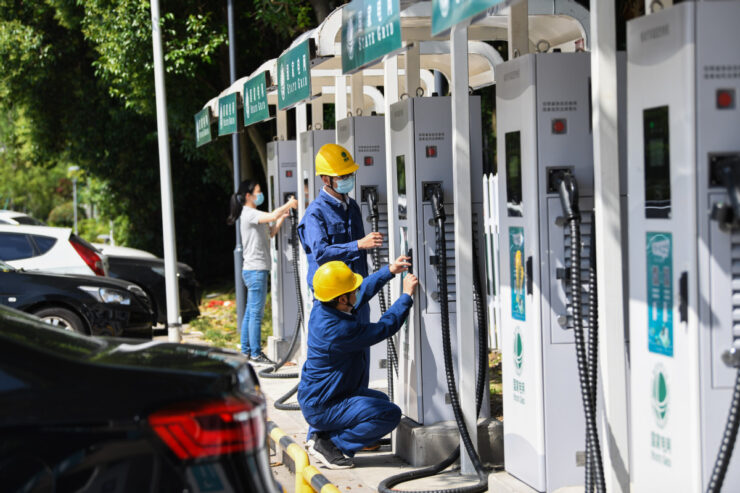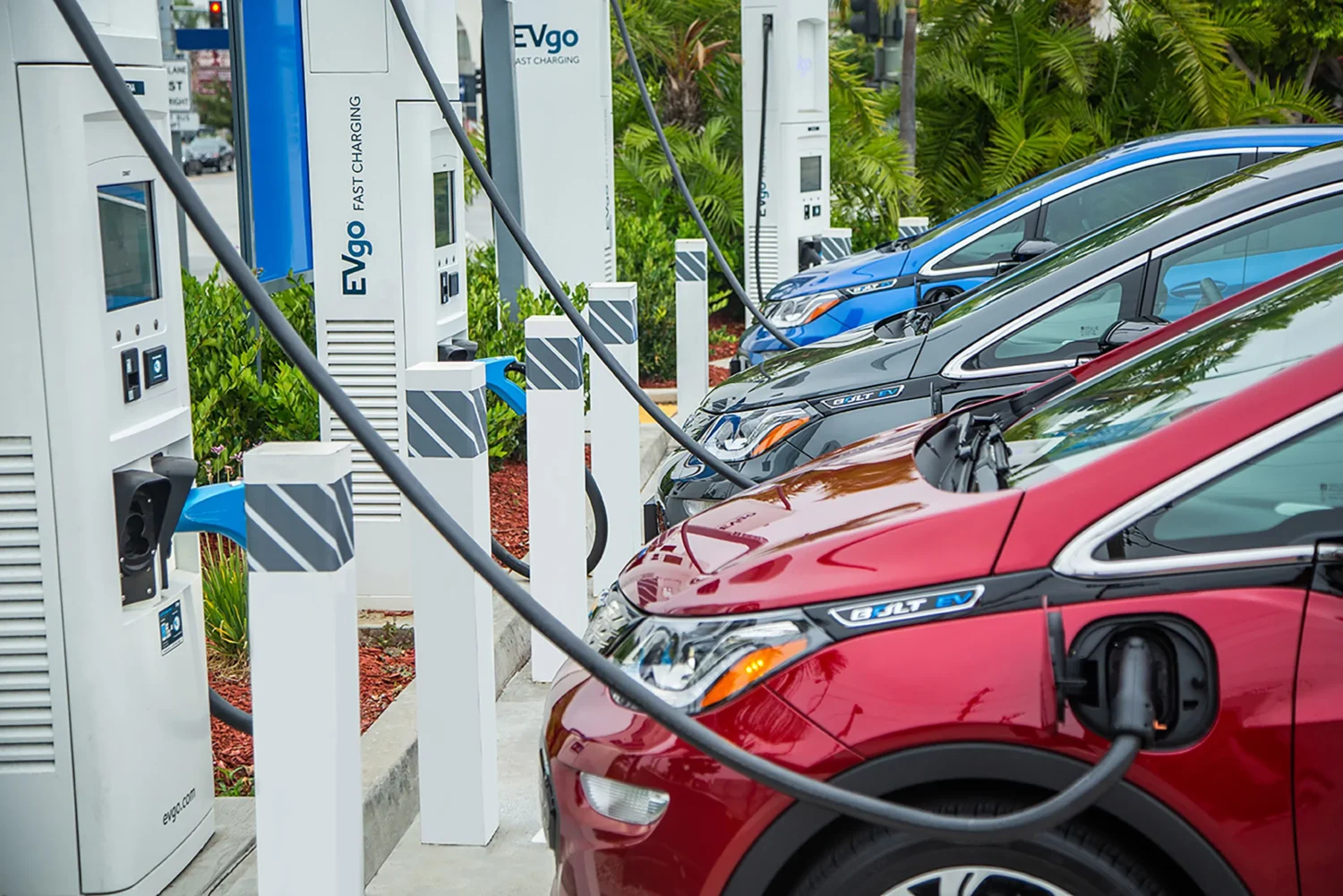In recent years, the adoption of electric vehicles (EVs) has experienced a remarkable surge, driven by advancements in technology, environmental concerns, and government initiatives promoting sustainable transportation. As more individuals and businesses transition to EVs, the demand for electric car charging stations has soared. Installing the infrastructure is crucial to support this growing market and ensure the widespread accessibility of EV charging.
Understanding the Different Types of Electric Car Charging Stations

Before delving into the installation process, it is essential to understand the different types of electric car charging stations available. There are three primary types: Level 1, Level 2, and DC fast charging.
- Level 1 stations utilize a standard household outlet (120 volts) and offer a charging rate of approximately 4-5 miles of range per hour. These are best suited for residential use and are relatively inexpensive to install.
- Level 2 charging stations operate at 240 volts and provide a faster charging rate compared to Level 1. They offer a range of 10-60 miles per hour of charging, depending on the vehicle’s specifications. Level 2 ones are commonly found in commercial settings, such as workplaces, shopping centers, and public parking lots.
DC fast charging stations, also known as Level 3, provide the fastest charging rates available. They utilize high-powered direct current to deliver a significant amount of charge in a short period. DC fast ones can charge an EV from 0 to 80% in approximately 30 minutes, making them ideal for long-distance travel or high-traffic areas.
Evaluating Your Needs
When considering the installation of electric car charging stations, it is crucial to evaluate the requirements for your specific location. If you’re not sure how to approach this issue you should contact a professional service such as lightuppittsburgh.com. Factors to consider include the average number of EVs present, the duration of their stay, and the charging demands of different types of users (residential, commercial, or fleet).
For residential installations, Level 1 or Level 2 stations are typically sufficient, as homeowners can charge their vehicles overnight. However, for commercial installations, the demand may be higher, necessitating the inclusion of Level 2 or DC fast stations.
It is also important to consider future growth and scalability. Installing additional conduits and wiring during the initial installation phase can help accommodate future expansion and reduce future costs.
Choosing the Right Location for the Installation

Selecting the optimal location for your electric car charging station is crucial for ensuring accessibility and convenience. When identifying potential sites, consider factors such as visibility, proximity to major roads, parking convenience, and available power supply.
High-visibility areas are preferable, as they attract more users and promote the visibility of electric mobility. Locations near highways, shopping centers, and densely populated areas are often ideal. Additionally, proximity to amenities such as restrooms, shops, or dining options can enhance the overall user experience.
Parking convenience is another essential consideration. Ensure that the station installation does not obstruct existing parking spaces and allows for easy maneuverability. Adequate signage and marking can help users easily locate the stations.
Permitting and Regulatory Considerations
Before proceeding with the installation of electric car charging stations, it is crucial to understand the permitting and regulatory considerations involved. Local building codes, zoning regulations, and electrical regulations may dictate specific requirements for station installations.
Contact your local building department or regulatory agency to obtain information on the necessary permits and regulations. It is essential to comply with all applicable codes and guidelines to ensure the safety and legality of your station installation.
Additionally, consider any specific requirements or incentives provided by local authorities or utility companies. Some regions offer grants, rebates, or expedited permitting processes to encourage the installation of charging infrastructure.
Determining the Number of Charging Ports and Capacity for Your Station
The number of charging ports and the overall capacity of your electric car charging station depend on the anticipated demand at your location. Consider factors such as the number of EVs expected to use the station simultaneously, the duration of their stay, and the desired rate.
For residential installations, a single port is often sufficient, as homeowners typically charge their vehicles overnight. However, for commercial installations, multiple ports may be necessary to accommodate higher demand.
Assess the power supply available and consult with a licensed electrician to determine the maximum capacity your electrical system can support. It is essential to strike a balance between the number of ports and the available power capacity to avoid overloading the system.
Installation Process

The installation process of electric car charging stations requires the expertise of a licensed electrician. Attempting a DIY installation or hiring unqualified individuals can lead to safety hazards, electrical issues, and non-compliance with regulations.
Hire a licensed electrician experienced in EV station installations. They will assess your power supply, install the necessary wiring and conduits, and connect the equipment according to manufacturer specifications and local regulations.
Ensure that the electrical wiring meets the appropriate safety standards, such as National Electrical Code (NEC) requirements. The electrician should conduct thorough testing to verify the proper functioning of the station before finalizing the installation.
Networking and Monitoring
To effectively manage and monitor your electric car charging stations, it is beneficial to integrate them into a centralized management system. Networking the stations allows for remote monitoring, access control, and data collection.
Charging station management systems enable monitoring of all sessions, tracking energy usage, and managing payment systems. They can also provide real-time status updates, allowing users to check the availability of ports and reserve them if needed.
When selecting a charging station management system, consider factors such as compatibility with the equipment, user-friendly interfaces, and the availability of support and maintenance services.
Payment Systems and User Experience
To ensure a seamless user experience, it is crucial to implement convenient and secure payment systems for your electric car charging stations. Various payment options can be offered, including credit card payments, mobile apps, RFID cards, or subscription-based models.
Consider integrating with popular payment platforms or partnering with established payment service providers to facilitate a smooth and secure transaction process. User-friendly interfaces and clear instructions can help users navigate the payment system effectively.
Additionally, prioritize the security of user data and transactions. Implement encryption protocols and adhere to industry-standard security practices to safeguard sensitive information.
Maintenance and Upkeep

To maximize the longevity and reliability of your electric car charging stations, regular maintenance and upkeep are essential. Develop a maintenance plan that includes routine inspections, cleaning, and software updates.
Schedule periodic inspections by a licensed electrician to ensure the electrical components are in proper working order. Check for signs of wear and tear, loose connections, or damaged cables. Clean the equipment and surrounding area regularly to maintain a professional and inviting appearance.
Stay informed about software updates provided by the charging station manufacturer. These updates often include bug fixes, security enhancements, and improved functionality. Keeping your stations up to date will contribute to their long-term performance and ensure compatibility with evolving technologies.
Conclusion
Installing electric car charging stations requires careful planning, assessment of charging requirements, consideration of power supply, adherence to regulations, and professional installation. By following this comprehensive guide, you can successfully set up infrastructure that is accessible, reliable, and convenient, contributing to the widespread adoption of electric vehicles and a greener future.

